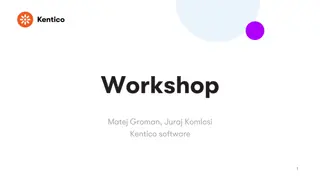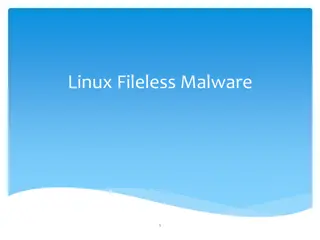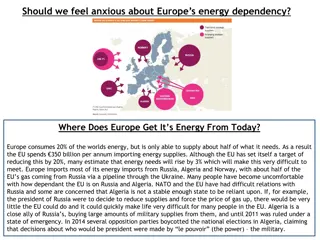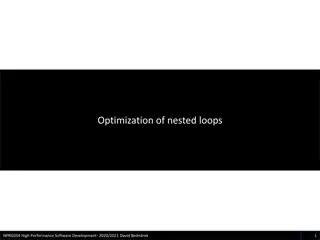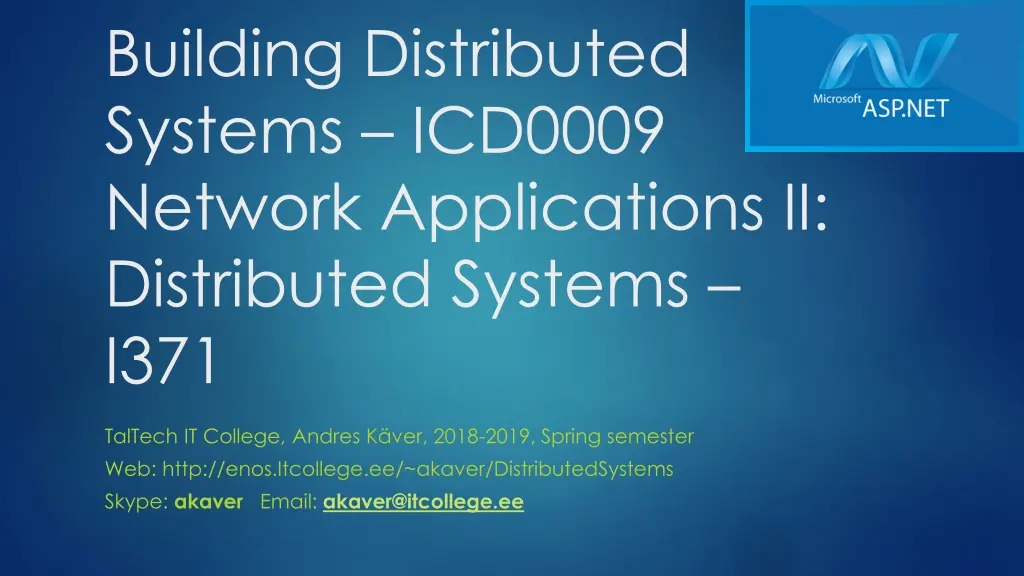
Distributed Systems Network Applications with Dependency Inversion
"Explore the concepts of Dependency Inversion Principle, Inversion of Control, and Dependency Injection in building distributed systems. Learn how to decouple high-level and low-level modules for better abstraction and reusability. Understand the importance of controlling dependencies for efficient system interface and event management." (298 characters)
Download Presentation

Please find below an Image/Link to download the presentation.
The content on the website is provided AS IS for your information and personal use only. It may not be sold, licensed, or shared on other websites without obtaining consent from the author. If you encounter any issues during the download, it is possible that the publisher has removed the file from their server.
You are allowed to download the files provided on this website for personal or commercial use, subject to the condition that they are used lawfully. All files are the property of their respective owners.
The content on the website is provided AS IS for your information and personal use only. It may not be sold, licensed, or shared on other websites without obtaining consent from the author.
E N D
Presentation Transcript
Building Distributed Systems ICD0009 Network Applications II: Distributed Systems I371 TalTech IT College, Andres K ver, 2018-2019, Spring semester Web: http://enos.Itcollege.ee/~akaver/DistributedSystems Skype: akaver Email: akaver@itcollege.ee
Dependency Inversion Principle 1 Theory was first formalized by Robert C. Martin, 1996 High-level modules should not depend on low-level modules. Both should depend on abstractions. Abstractions should not depend upon details. Details should depend upon abstractions Example from life myriad of chargers and small scale electronic devices
Dependency Inversion 2 Every module is with its own interface Higher module has to support them all separately Modules are not reusable Higher module Interface Interface Interface Lower module Lower module Lower module
Dependency Inversion 3 Higher module specifies the required interface All modules depend of the same interface Modules are reusable Higher module Interface Lower module Lower module Lower module
Inversion of Control 4 Software development pattern Implements the Dependency Inversion principle Control over how different systems interface with each other Control over program events (command line vs graphical UI) Control over dependency creation and binding
Dependency Injection 5 Implementation of IoC (DIP -> IoC -> DI) Dependency creation and resolving of them is moved outside of dependent class Injector Class Interface Class Interface Dependency Dependency
DI - Caution 6 Internal principles of class behavior will be exposed Dependencies are created before they are actually needed Don t overuse is it needed for everything?
DI Meta example 7 Using constructor IRepo xmlrepo = new XMLRepo(); Controller Cnt = new Controller(xmlrepo); public class Controller{ private readonly IRepo repo; public Controller(IRepo repo){ this.repo = repo; } }
DI Meta example MVC 8 During testing you can supply different implementation of repository In regular use default constructor is used and dependency is created public class PersonController:Controller{ private readonly IRepo _repo; public PersonController (IRepo repo){ _repo = repo ?? new PersonRepository(); } public PersonController() : this.PersonController(null) { } }
Dependency Injection Container 9 Framework Registers interfaces and their implementations Resolves dependencies and provides (injects) correct implementation Lifecycle management of created objects Several implementations - widely used are ASP.NET Core has built-in lightweight solution out-of-the-box Ninject Open Source Unity - MS official solution Autofac
Demo console application 10 public class PetOwner { private readonly IDog _dog; public interface IDog { string Walk(); int WalkingCount { get; set; } } public PetOwner(IDog dog) { _dog = dog; } public class DogPoodle : IDog { public string Walk() { WalkingCount++; return "Poodle walks "+WalkingCount.ToString()+" times!"; } public int WalkingCount { get; set; } } public int Walkings() { return _dog.WalkingCount; } public void Walk() { Console.WriteLine(_dog.Walk()); } }
Demo console application 11 static void Main(string[] args) { var kernel = new StandardKernel(); kernel.Bind<IDog>().To<DogPoodle>(); var dogKeeper = kernel.Get<PetOwner>(); dogKeeper.Walk(); Console.ReadLine(); }
Demo Asp.Net MVC 12 Controller public class PersonController : Controller { private readonly IPersonRepository _repo; public PersonController(IPersonRepository repo) { _repo = repo; } }
ASP.NET Core DI - Lifetime 13 Transient Transient lifetime services are created each time they're requested. This lifetime works best for lightweight, stateless services. Scoped Scoped lifetime services are created once per http request. Singleton Singleton lifetime services are created the first time they're requested. Every subsequent request uses the same instance. If the app requires singleton behavior, allowing the service container to manage the service's lifetime is recommended. Don't implement the singleton design pattern and provide user code to manage the object's lifetime in the class.
ASP.NET Core DI - EF 14 Entity Framework contexts should be added to the service container using the scoped lifetime. This is handled automatically with a call to the AddDbContext<> method when registering the database context. Services that use the database context should also use the scoped lifetime.
ASP.NET Core DI Constructor injection 15 Services can be resolved by two mechanisms: IServiceProvider ActivatorUtilities Permits object creation without service registration in the dependency injection container. ActivatorUtilities is used with user-facing abstractions, such as Tag Helpers, MVC controllers, and model binders. Constructors can accept arguments that aren't provided by dependency injection, but the arguments must assign default values. When services are resolved by IServiceProvider or ActivatorUtilities, constructor injection requires a public constructor. When services are resolved by ActivatorUtilities, constructor injection requires that only one applicable constructor exists. Constructor overloads are supported, but only one overload can exist whose arguments can all be fulfilled by dependency injection.


